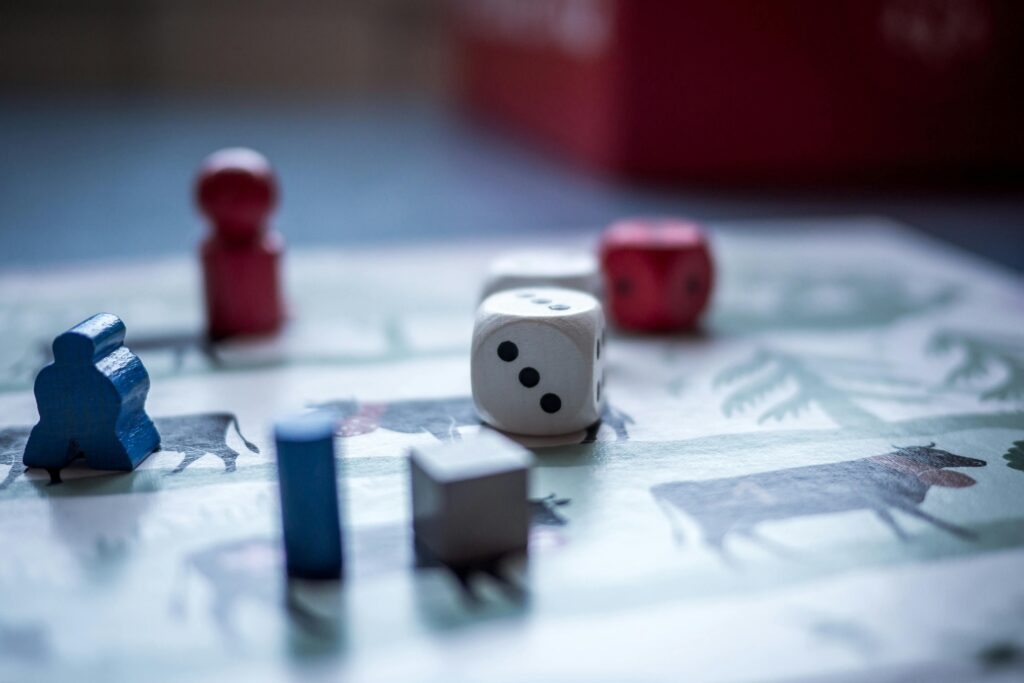Bust a Move: a Problem Solving Sparring Game

Combat games take the potential chaos of freeplay and break it down in chunks that we can work on one at a time, eventually bridging it all together into something we have ready and able to use when that combative moment comes up.
Continuing my previous article on the sparring game “Mortal-Immortal“, today we look at another game that makes for a fun and manageable transition from drills into free combat.
Bust a Move
Swordfighting is a lot about problem solving. My partner has a thrusting point or cutting edge that presents a problem to me. I need to apply my weapon to them without getting hit. By selecting the right tool for the job, we can begin to solve these problems by having our partner give us one little sequence at a time.
- My partner takes a position with their sword. They are “programmed” with a very short sequence of actions (one or two steps, their choice) which they will execute when I trip their activation threshold (again, their choice). I do not know my partner’s program.
- From a safe distance I begin to approach my partner.
- My partner decides to enact their program. They could work any kind of combo. For example:
- they deliver a simple and direct attack that covers my sword
- they deliver an attack that comes in at a more indirect angle
- they wait for my attack, parry my sword and attempt a riposte
- they back away and do nothing else
- they charge forward towards me
- they use their (optional) dagger/buckler/baton/cloak to parry my sword and attack me with their sword
- they try to strike an exposed hand or arm
- Every time I approach, my partner will “bust their move” exactly the same way, no matter how it goes for them. Their program is simple and limited with no variation.
- When I want them to bust a different move, I ask them by saying “next move, please.”
The Work Begins
Now we get to work with our partner’s move. First priority is to do some reconnaissance—discover their move without getting hit by it. If they’re doing something purely defensive, then that’s easier. But if they have an attack prepared, we need to discover the nature of that attack without being struck. Survive to fight another pass! Approach cautiously and if we don’t manage to solve and counter their attack the first time, that’s okay. Trigger their attack and be ready to defend and exit safely.
We now have the knowledge of what’s coming, and we can plan for it. From a safe distance, we consider what might be done to counter their maneuvers and deliver our strike. We know where the attack is coming from. We know what angle it will take. We know what footwork to expect.
We now approach with an idea of where to place our sword, where to position our body and when to act. We begin our approach, our partner busts their move and we attempt to counter it with our plan. Success? Sometimes not right away. It may take another approach or two to fully iron out a viable counter action.
Once we have one successful counter in the bag, we need not stop there. Why not work with my partner’s move a bit more to see if we can work out a few more counters? We’ll use a different sword angle, we’ll change lines, we’ll use our secondary weapon to good effect, we’ll change our footwork around and see if that makes a difference.
We can make the exercise easier by
- slowing down our partner’s move and our response to it, giving us a little more time to think through the actions required
- make our partner’s sequence shorter and simpler. Limit them to one step and one move of the weapon.
And we can make the exercise more difficult by
- allowing our partner to move faster, even up to full combat speed
- giving our partner the ability to design a move that’s two or three steps long (more than that can get difficult to execute reliably every time)
Set a timer and trade roles after a round has elapsed. If you’re working in a group change partners after each pair has played both roles. You can even use your partner’s move as the initial sequence of freeplay. That is, once your partner has dispensed their maneuver, if no one got hit, continue playing until a strike is made. It creates a nice segue from a known set of actions into an unknown set of actions.
Make sure that your partner’s busted move is the exact same every time. If they start modifying their move on the fly, the purpose of the game is somewhat defeated. We want a short bit of combat play that we can take as a chunk and problem solve until we’re satisfied with the answer. If we can derive a principle from solving a particular problem, we’re the richer for it.
Some problems need more complex answers, and it can make for good discussion and inquiry into deeper and more sophisticated techniques required to address them. Once basic combat problems are reliably solved, let the harder ones push you into unknown spaces of learning and skill development. There’s no end to the number of moves we can create and work on as fun puzzles and curious conundrums.
Enjoy your training!
Greg




Responses